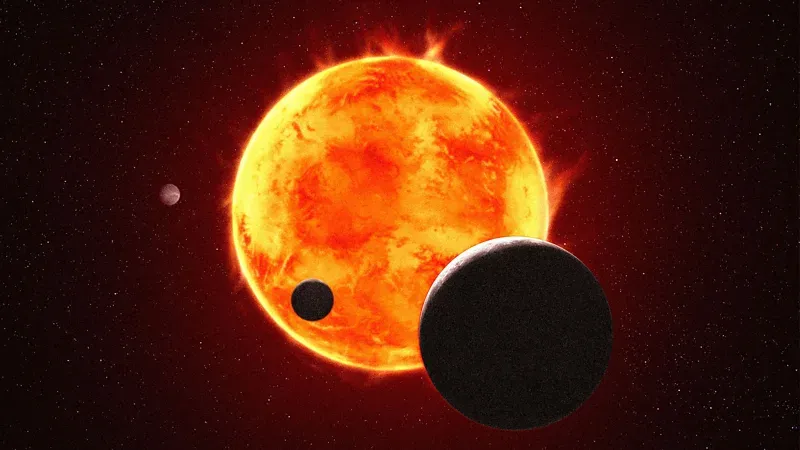


The instrument behind the discovery was Elodie, a spectrograph that had been installed two years earlier at the Haute-Provence observatory in southern France. Designed by a Franco-Swiss team, Elodie split starlight into a spectrum of different colours, revealing a rainbow etched with fine dark lines. These lines can be thought of as a "stellar barcode", providing details on the chemistry of other stars. On 6 October 1995, at a scientific meeting in Florence, Italy, two Swiss astronomers made an announcement that would transform our understanding of the Universe beyond our Solar System. Michel Mayor and his PhD student Didier Queloz, working at the University of Geneva, announced they had detected a planet orbiting a star other than the Sun.
The star in question, 51 Pegasi, lies about 50 light years away in the constellation Pegasus. Its companion – christened 51 Pegasi b – was unlike anything written in textbooks about how we thought planets might look. This was a gas giant with a mass of at least half that of Jupiter that circled its star in just over four days. It was so close to the star (1/20th of Earth's distance from the Sun, well inside Mercury's orbit) that the planet's atmosphere would be like a furnace, with temperatures topping 1,000C (1,830F).
What Mayor and Queloz spotted was 51 Pegasi's barcode sliding rhythmically back-and-forth in this spectrum every 4.23 days – a telltale signal that the star was being wobbled by the gravitational tug of an otherwise unseen companion amid the glare of the star. After painstakingly ruling out other explanations, the astronomers finally decided that the variations were due to a gas giant in a close-in orbit around this Sun-like star. The front page of the Nature journal in which their paper was published carried the headline: "A planet in Pegasus?"
The discovery baffled scientists, and the question mark on Nature's front cover reflected initial scepticism. Here was a purported giant planet next to its star, but there was no known mechanism for forming a world like this in such a fiery environment. While the signal was confirmed by other teams within weeks, reservations about the cause of the signal remained for almost three years before being finally ruled out. Not only did 51 Pegasi b become the first planet discovered orbiting a solar-like star outside our Solar System, but it also represented an entirely new type of planet. The term "hot Jupiter" was later coined to describe such planets.
The discovery was the crack in the door that, once opened, resulted in a flood. In the 30 years since, more than 6,000 exoplanets (the term for planets outside our Solar System) and candidates for what might be exoplanets have been catalogued. Their variety is staggering: not just hot, but ultra-hot Jupiters with orbits of less than a day; worlds that orbit not one but two stars, like Tatooine from Star Wars; strange "super-puff" gas giants larger than Jupiter but with a fraction of the mass; chains of small rocky planets all piled up in tight orbits.
The discovery of 51-Pegb triggered a revolution and, in 2019, landed Mayor and Queloz a Nobel Prize. We can now infer that most stars have planetary systems – and yet, of the thousands of exoplanets found, we have yet to find a planetary system that resembles our own.
The quest to find an Earth twin – a planet that resembles Earth in size, mass and temperature – continues to drive modern-day explorers like us to search for more undiscovered exoplanets. Our expeditions may not take us on death-defying voyages and treks like the past legendary explorers of Earth – but we do get to visit beautiful, mountain-top observatories often located in remote areas around the world.
We are members of an international consortium of planet hunters that built, operate and maintain the Harps-N spectrograph, mounted on the Telescopio Nazionale de Galileo on the beautiful Canary Island of La Palma. This sophisticated instrument allows us to rudely interrupt the journey of starlight which may have been travelling unimpeded at speeds of 670 million mph (1.08 billion km/h) for decades or even millennia.
Each new signal has the potential to bring us closer to understanding how common planetary systems like our own may (or may not) be. In the background lies the possibility that one day, we may finally detect another planet like Earth.
Comment